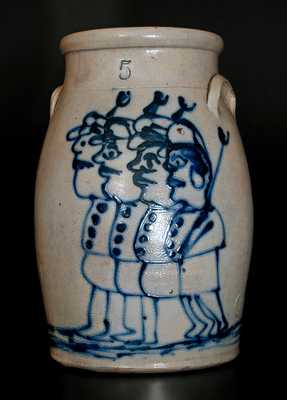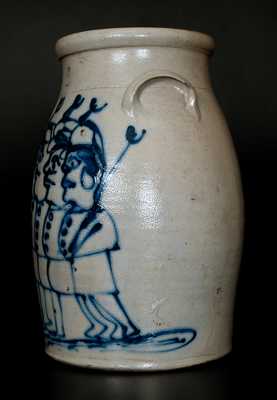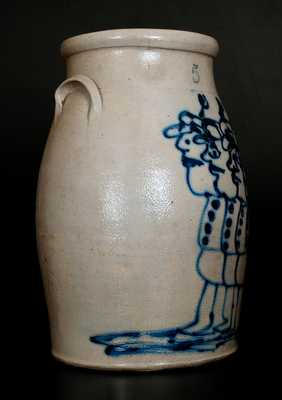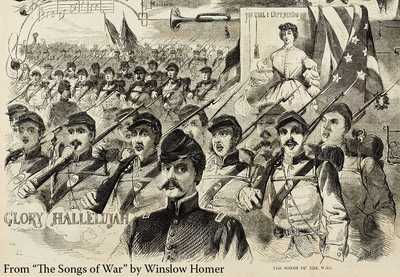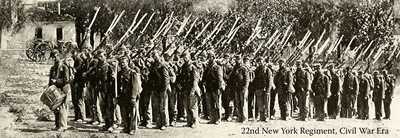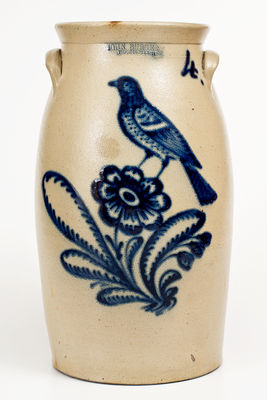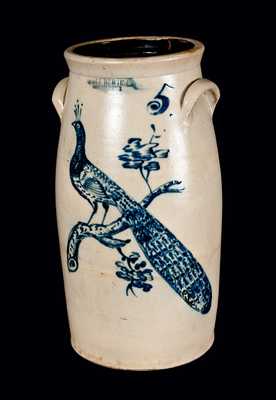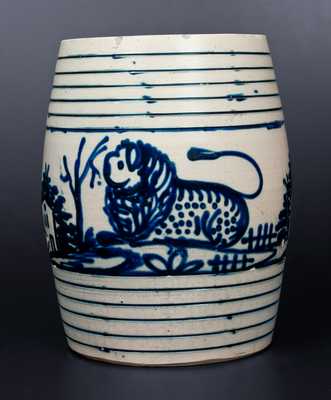Important and Possibly Unique Five-Gallon Stoneware Churn with Cobalt Marching Civil War Soldier Decoration, New York State origin, possibly Fort Edward, NY, circa 1861-1865, ovoid churn with tooled shoulder, rounded rim, and applied lug handles, boldly-decorated with a large slip-trailed design of four marching Union Civil War soldiers. Decoration depicts four strong-jawed, mustached soldiers in a tightly-formed battle line, each with distinctive kepi hat, buttoned coat, and rifle with bayonet leaning against his shoulder. The color of the cobalt is strong and vibrant, and the size of the decoration is impressive, measuring approximately 13" tall and covering most of the churn's front. The decorator may have been inspired by a personal account of the Civil War, or perhaps by one of various published magazine illustrations available at the time. Images created by noted American artist, Winslow Homer, in "Harper's Weekly," for example, may have served as a basis for this design. Aspects of the form, decoration, color, and capacity mark, strongly suggest this churn was made at one of the many stoneware manufactories located in Fort Edward, New York, during the time period. A Union militia training ground located on Rogers Island in the town of Fort Edward, may also have been the motivation behind this work. Combining bold figural decoration, purely American subject matter, and a wonderful folk art quality, this churn could easily be described as one of the most important stoneware discoveries of the past several years. Provenance: A fresh-to-the-market museum deaccession, last purchased in the 1930s. Thin 2 1/2" crack from rim. A small shallow chip to back edge of one handle. Faint surface lines to shoulder at handle on left side, not visible on interior. Small, in-the-firing stone ping to front, which is glazed over. A minor in-the-firing chip to interior of rim, which is partially glazed over. Two typical tiny nicks to inner rim where a lid would rest. H 15 1/2".

